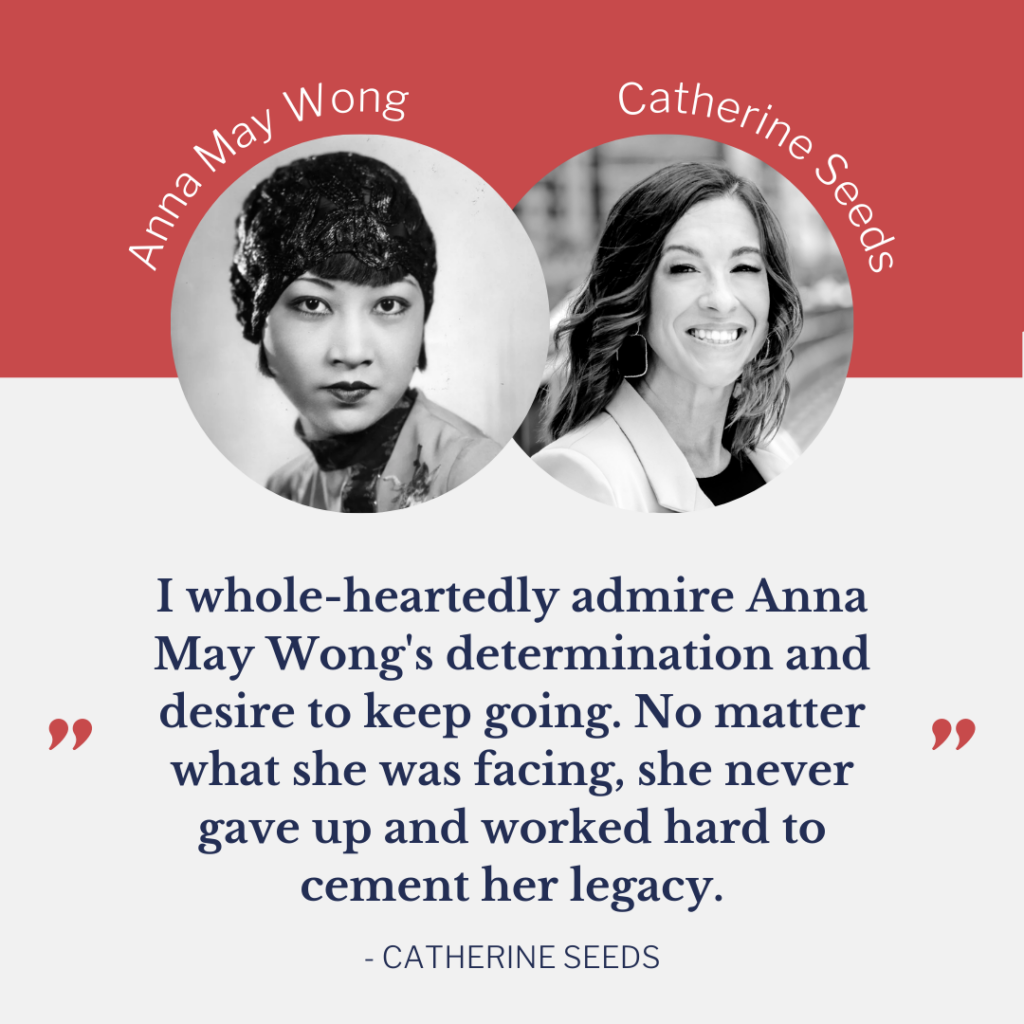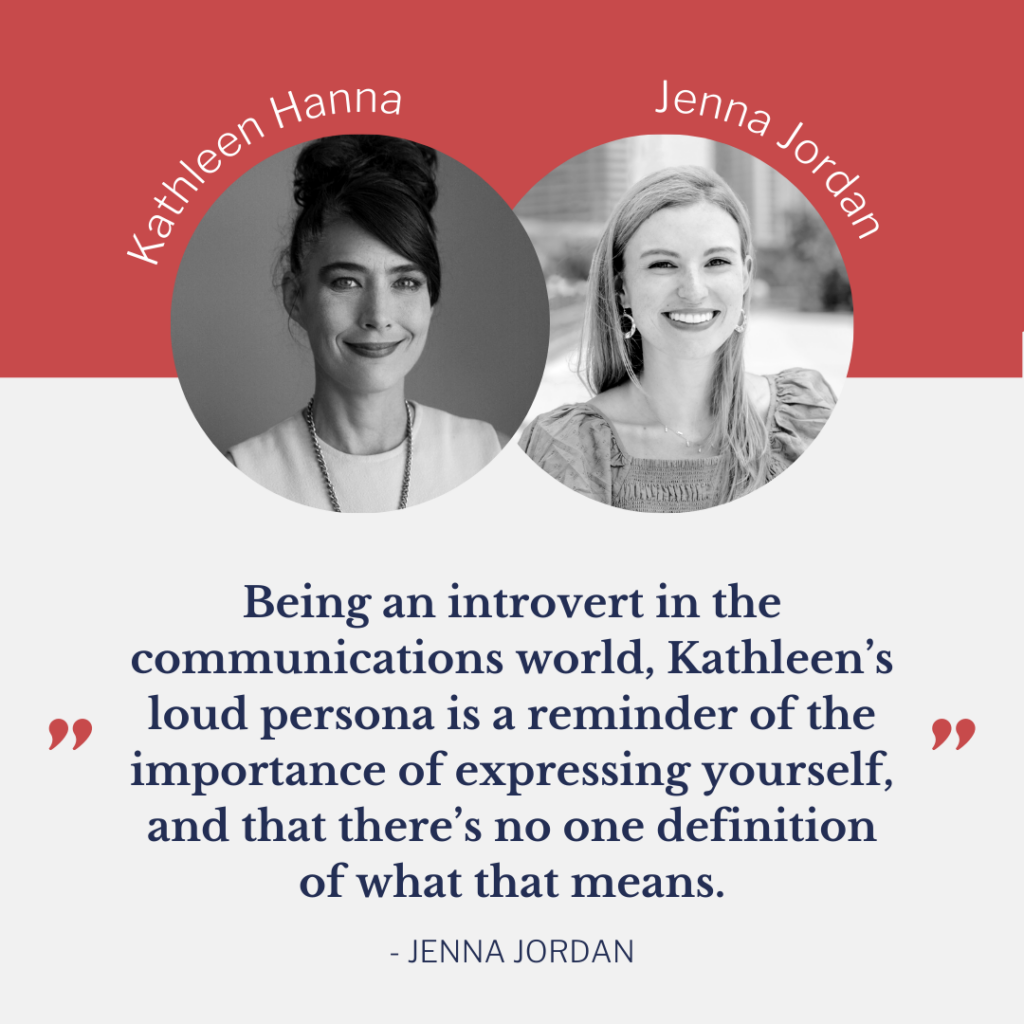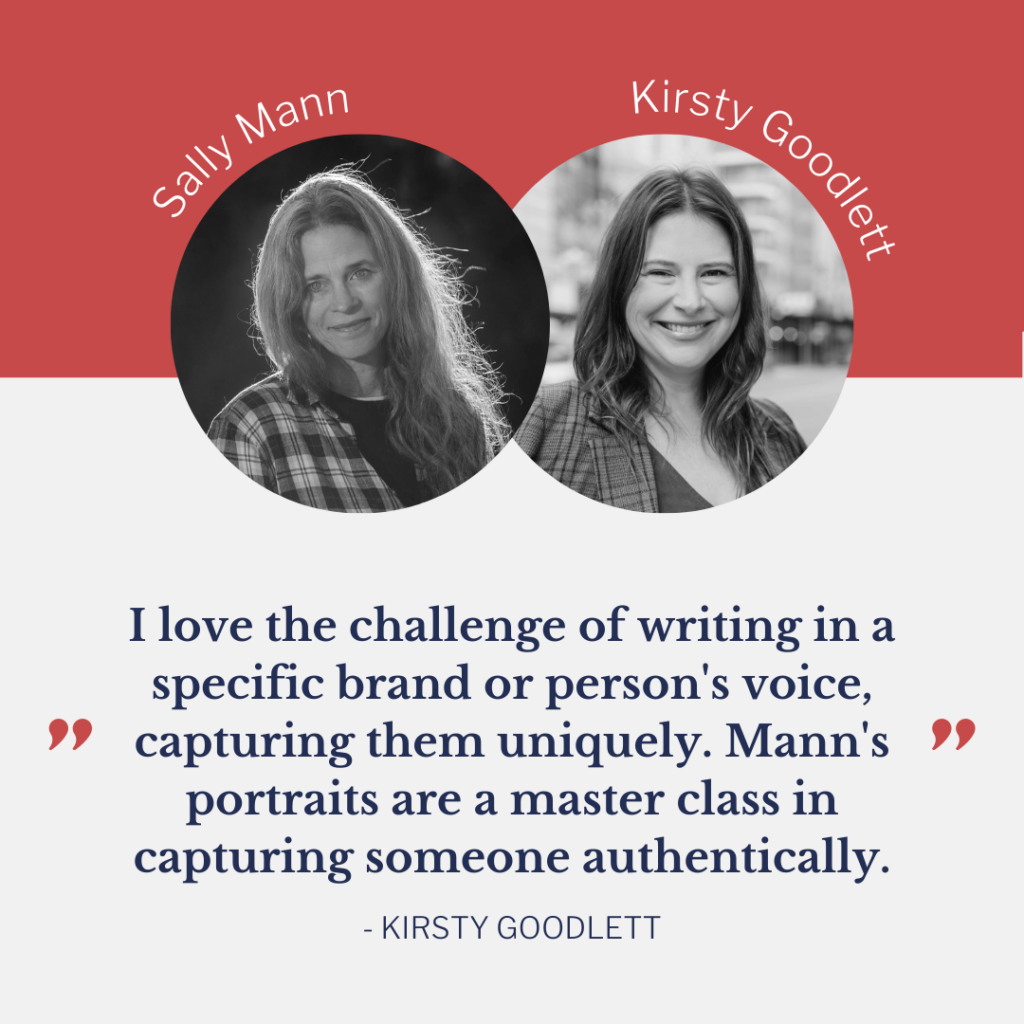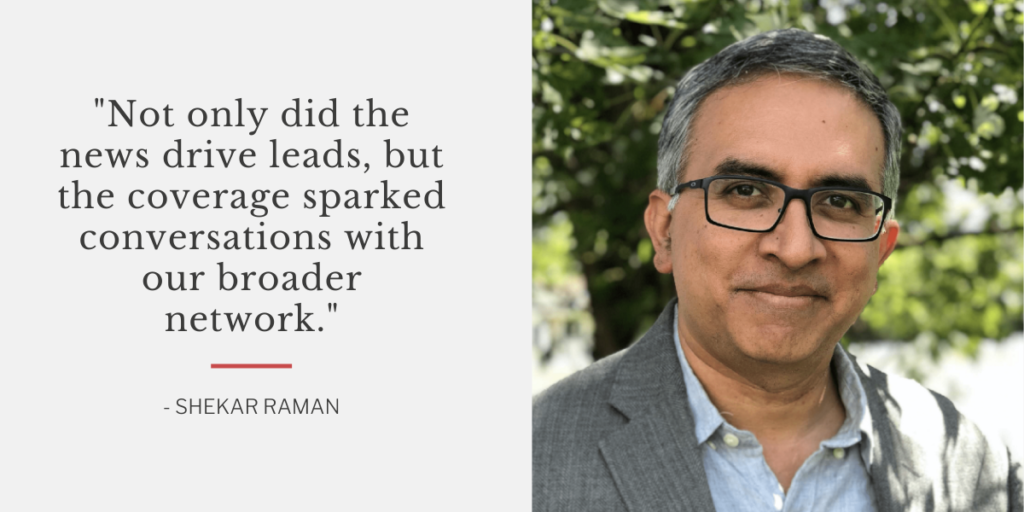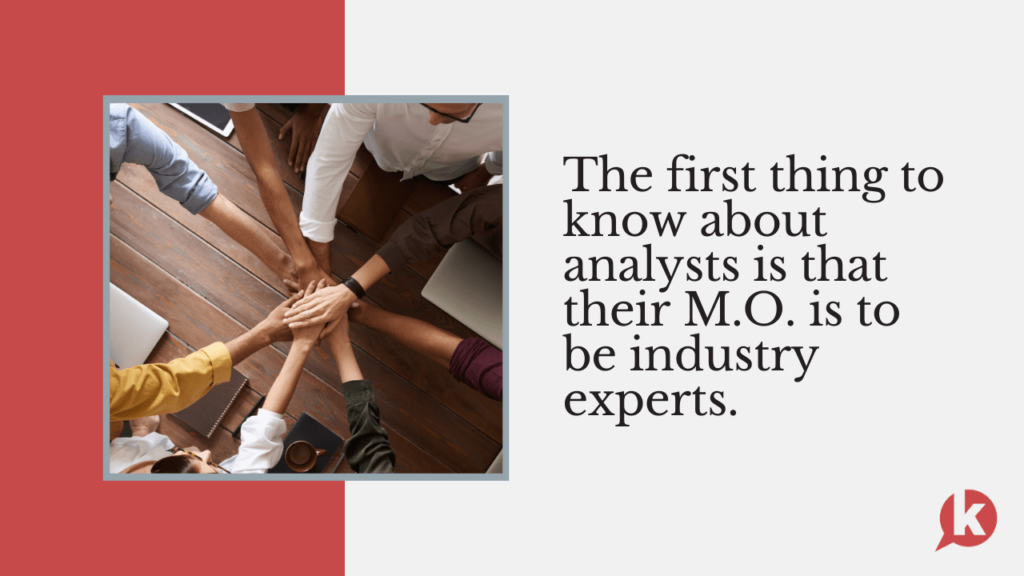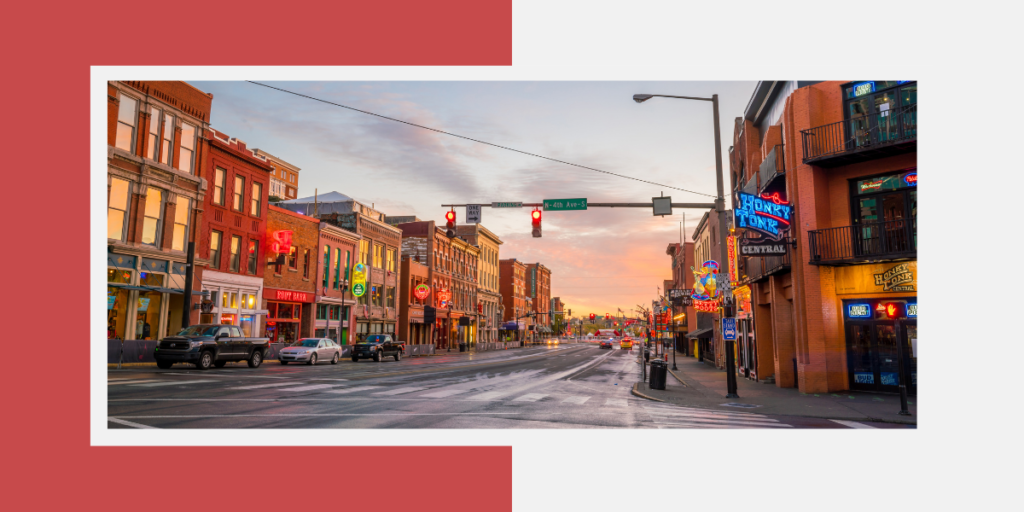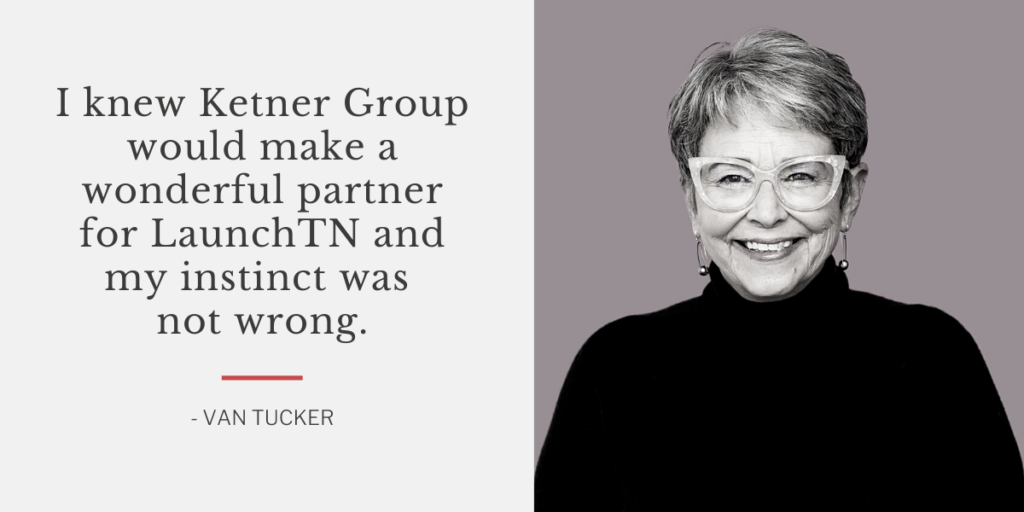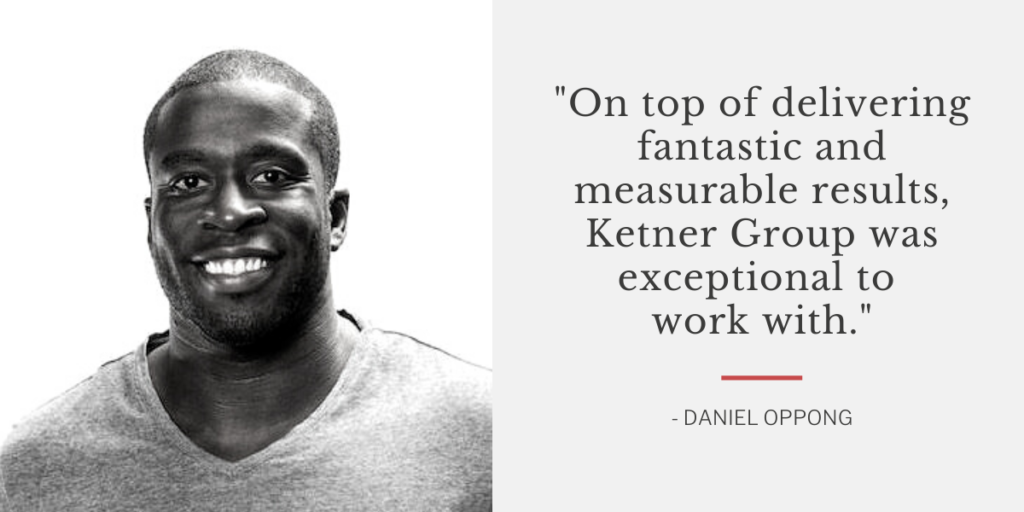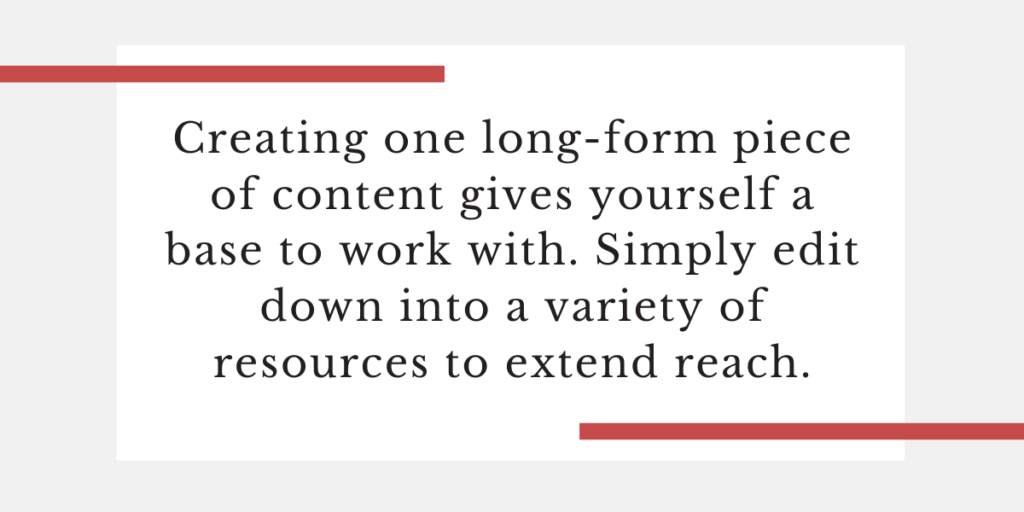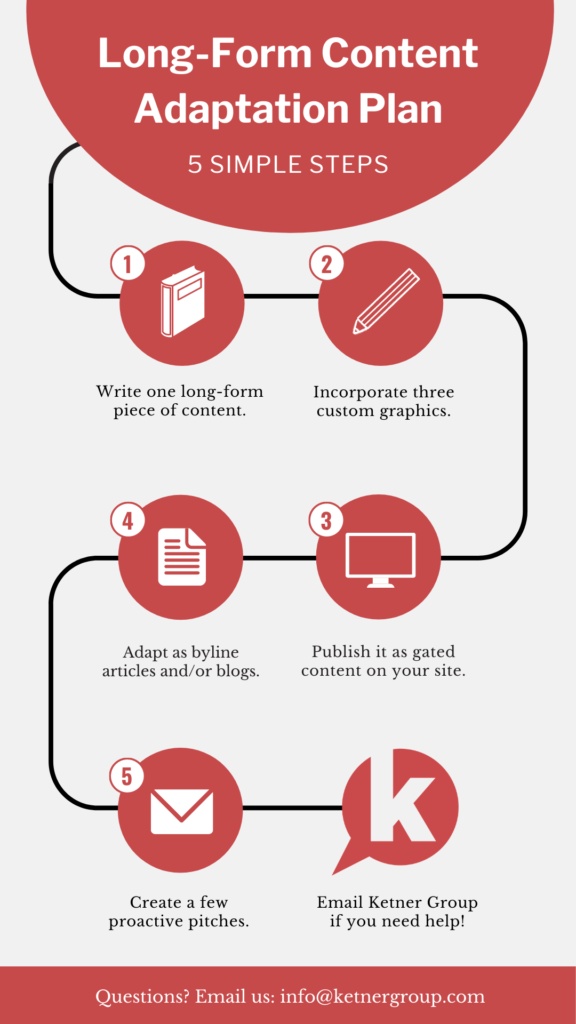“How are our PR activities driving business value?”
One of our B2B tech clients recently posed this question to us. It was undoubtedly a good one. And to answer the question, we took a short and long-term approach.
First, we summarized how we saw PR driving value based on our existing reports. Then, we provided recommendations for updating our processes to align with the company’s new marketing strategy.
In the short term, we compiled our notable annual successes, summarized campaigns in flight, compiled this year’s monthly reports and recommended a strategy for updating our reporting moving forward. For the long term, we discussed ways to develop new KPIs and reporting methods to align with their new marketing strategy. That way, once the new methods were in place, we’d be able to more clearly identify how our collaborative communications campaigns were helping the company meet their overall business goals.
This isn’t the only client we have who has asked us this question.
While our clients most often identify tracking and reporting processes when they set up a communications engagement, things happen. Internal marketing teams change. New products launch. Business strategies shift.
That’s why, whether kicking off a new communications retainer or revising our planning to align to new goals, evaluating reporting processes on a consistent basis is always a worthwhile investment.
Here are three steps we take to collaboratively define and track success alongside our clients.
Step One: Identify Our Goals
The B2B tech companies that have the most confidence in their PR strategies and corresponding results are the ones who have clear business goals that are directly aligned with the goals of their communications campaigns.
For example, one of our clients consistently comes up against five key competitors in their sales processes. Their goal is to generate more awareness than and differentiate themselves in the market against these core competitors. They seek to answer questions like, is Competitor A receiving more media placements? What press releases is Competitor B distributing?
Another client seeks to understand marketing output. How many press releases are we ideating vs. how many are being put on the wire? Where in the process are we being held up, is it client approval or the press release questionnaire stage?
Yet another client wants to understand their saturation within different verticals, particularly as they identify opportunities for expansion in new markets. How often are they generating placement in retail publications vs. finance? How often are they receiving pickup in general technology publications vs. top tier?
Step Two: Launch Monthly Tracking Processes
Once we identify our communications goals, we work closely with our clients to generate custom KPIs we can track against on a monthly basis. (Step three is to report on these on a quarterly basis.)
Many clients like the out-of-the box reports we deliver using the reporting tool Notified. This tool allows us to track information such as: total placements, publication readership and reach, sentiment, placement region, share of voice against competitors, topics and most impactful outlets.
Combined with our real-time coverage tracking and the ability to easily categorize coverage and activities manually, we collaboratively identify our monthly tracking process.
For example, for the clients referenced above, we respectively track competitive SOV; the number of press releases ideated, placed and published; and the number of placements across verticals (like retail vs. finance).
Step Three: Measure Against Goals on a Quarterly Basis
For many of our B2B technology clients, announcements vary through the year and byline articles do not consistently get published. For example, one client published no press releases all year until they put three on the wire in one month. Another found that the byline articles they placed in Q1 did not publish for months, until they suddenly all went live in June.
Since coverage comes in fits and spurts, we have recommend reporting on our goals on a quarterly basis, alongside quarter-by-quarter comparisons.
Many clients find PR to be a long game, so the more we build reporter relationships and consistently deliver quality resources to media, the more we see coverage increase over the years.
As well, we enjoy seeing clients meet initial goals and then begin to set new ones as the relationships progress! Personally, we love reviewing these quarterly reports for our client relationships that span multiple years.
A Note on What Our PR Reporting Can and Can’t Do
You may have reached this point of the blog post and said to yourself, ok, coverage and activities are all well and good, but what about leads? What about how PR impacts conversions? Great questions.
When it comes to the reports our B2B technology clients generate internally vs. what they expect from their PR agencies, it all comes down to the tools we have at our disposal.
We find that our clients utilize customer relationship management and web tracking tools internally, due to the proprietary nature and day-to-day maintenance requirements of many of these platforms.
As a result, when it comes to correlating communications activities to overall awareness, number of leads generated and number of conversions, we work closely with clients to link information from our efforts to their tools.
Our clients who feel most confident in their communications strategy combine the reports they receive from their tools with anecdotal evidence. Asking a prospect on a phone call, “how did you hear about us?” or including that same question in a demo request form are also great ways to correlate sales to PR.
Keep the Reporting Stories Coming
Looking to read more first-hand stories on PR reporting?
One of our clients wrote first-hand about their processes for correlating communications campaigns to leads.
Another client encouraged us to write a summary of our work together connecting press releases to leads.
And if you’re ready to brainstorm ways you can develop reporting processes that meet your specific needs, you’re always welcome to schedule a call with us!



